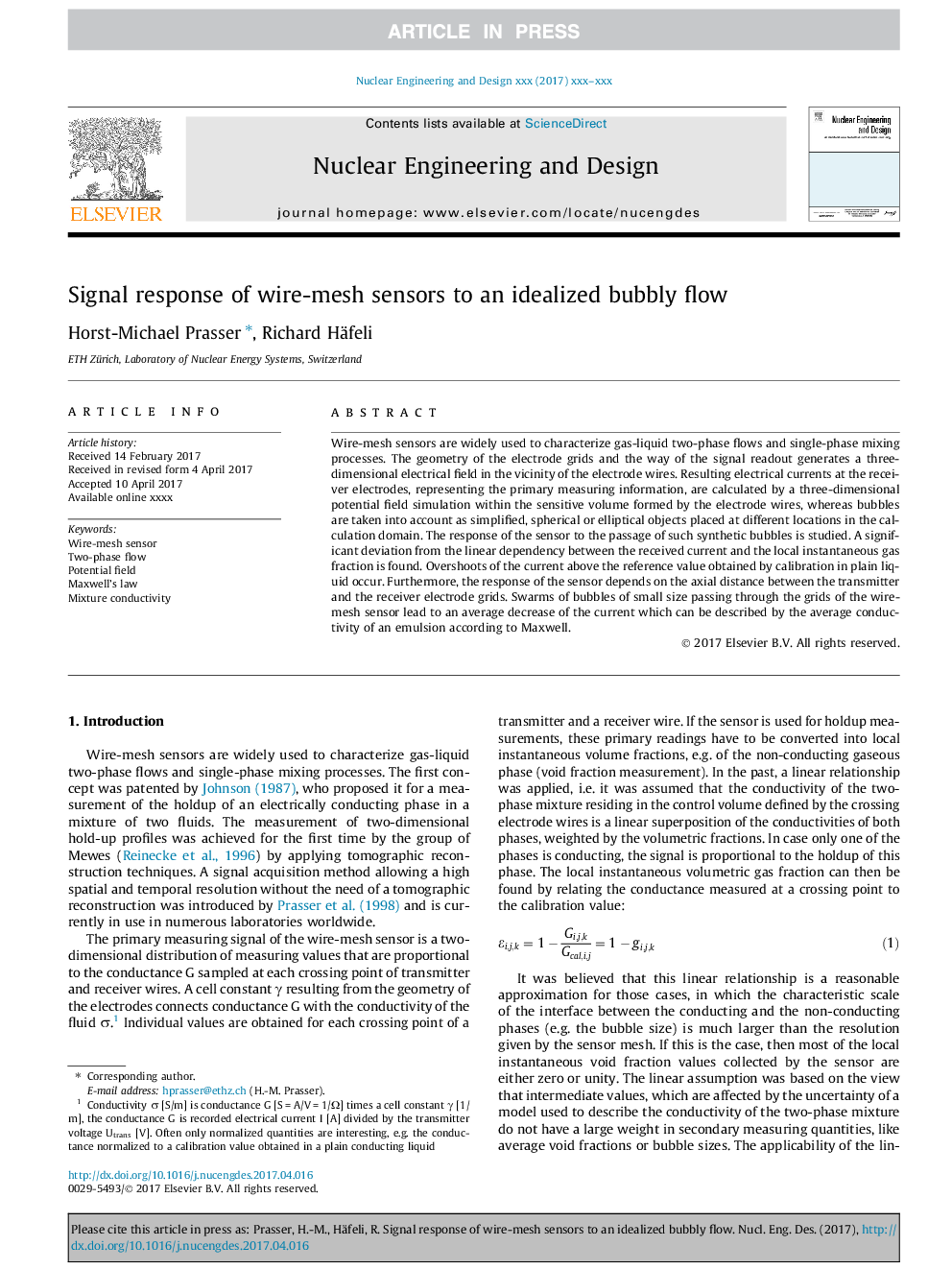| Article ID | Journal | Published Year | Pages | File Type |
|---|---|---|---|---|
| 6758643 | Nuclear Engineering and Design | 2018 | 12 Pages |
Abstract
Wire-mesh sensors are widely used to characterize gas-liquid two-phase flows and single-phase mixing processes. The geometry of the electrode grids and the way of the signal readout generates a three-dimensional electrical field in the vicinity of the electrode wires. Resulting electrical currents at the receiver electrodes, representing the primary measuring information, are calculated by a three-dimensional potential field simulation within the sensitive volume formed by the electrode wires, whereas bubbles are taken into account as simplified, spherical or elliptical objects placed at different locations in the calculation domain. The response of the sensor to the passage of such synthetic bubbles is studied. A significant deviation from the linear dependency between the received current and the local instantaneous gas fraction is found. Overshoots of the current above the reference value obtained by calibration in plain liquid occur. Furthermore, the response of the sensor depends on the axial distance between the transmitter and the receiver electrode grids. Swarms of bubbles of small size passing through the grids of the wire-mesh sensor lead to an average decrease of the current which can be described by the average conductivity of an emulsion according to Maxwell.
Related Topics
Physical Sciences and Engineering
Energy
Energy Engineering and Power Technology
Authors
Horst-Michael Prasser, Richard Häfeli,
